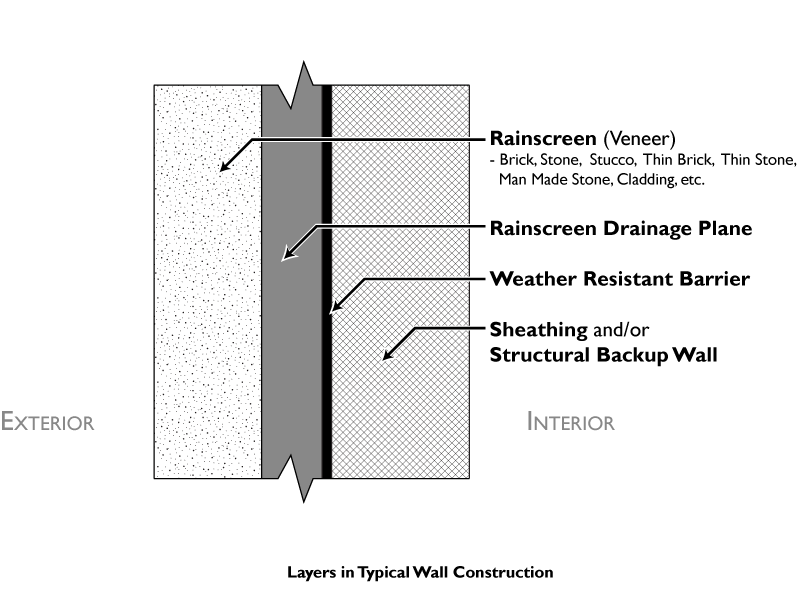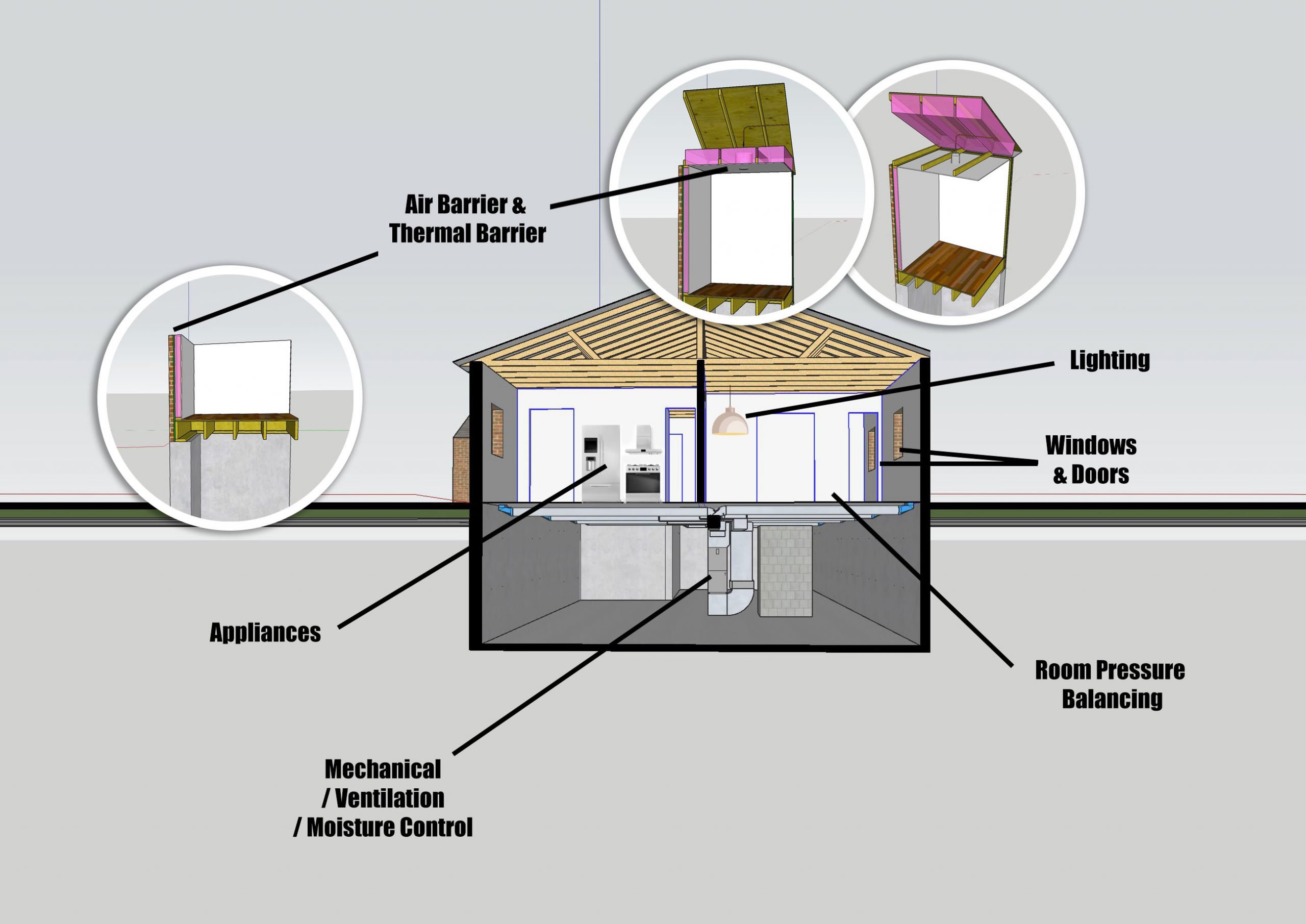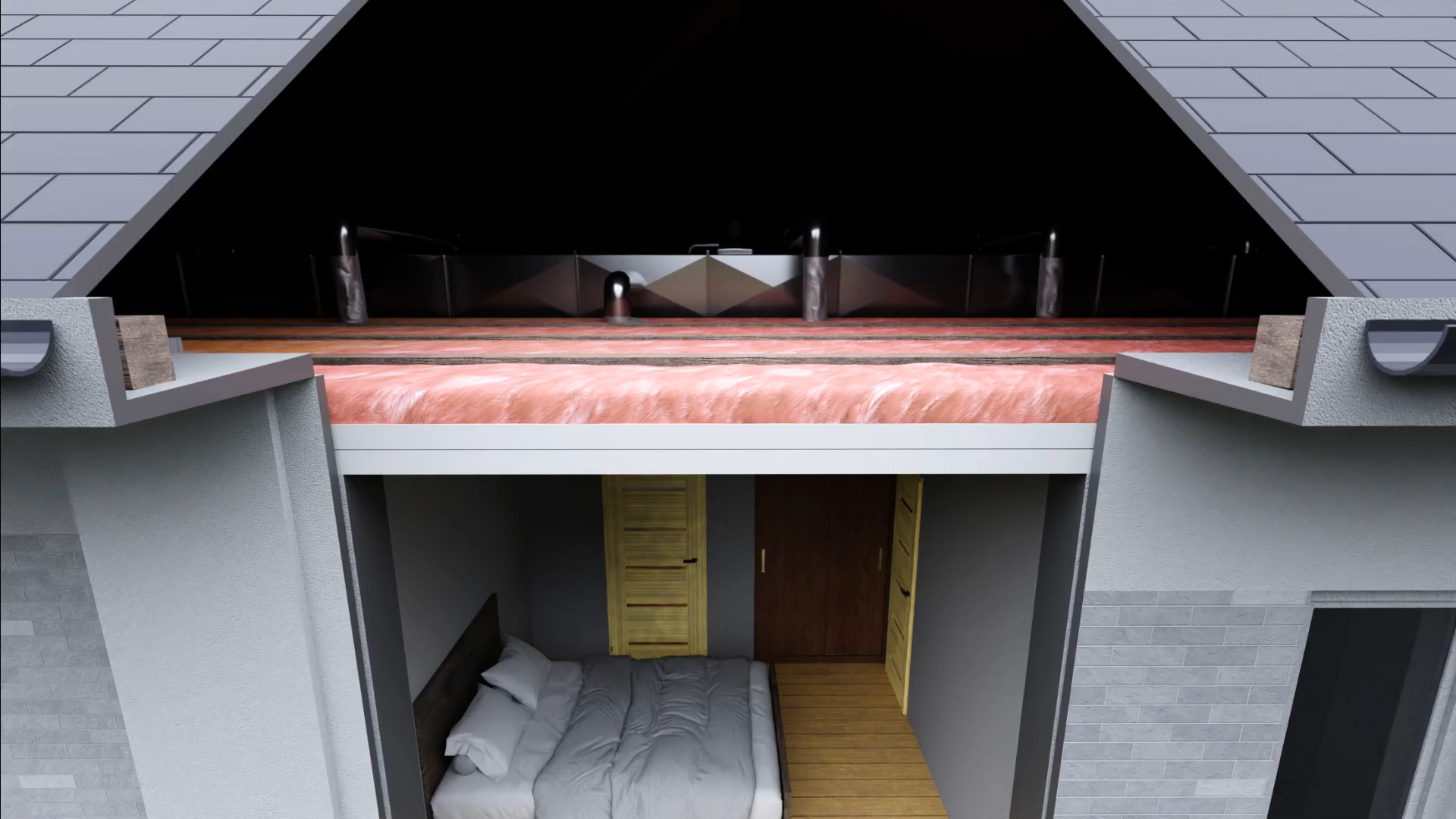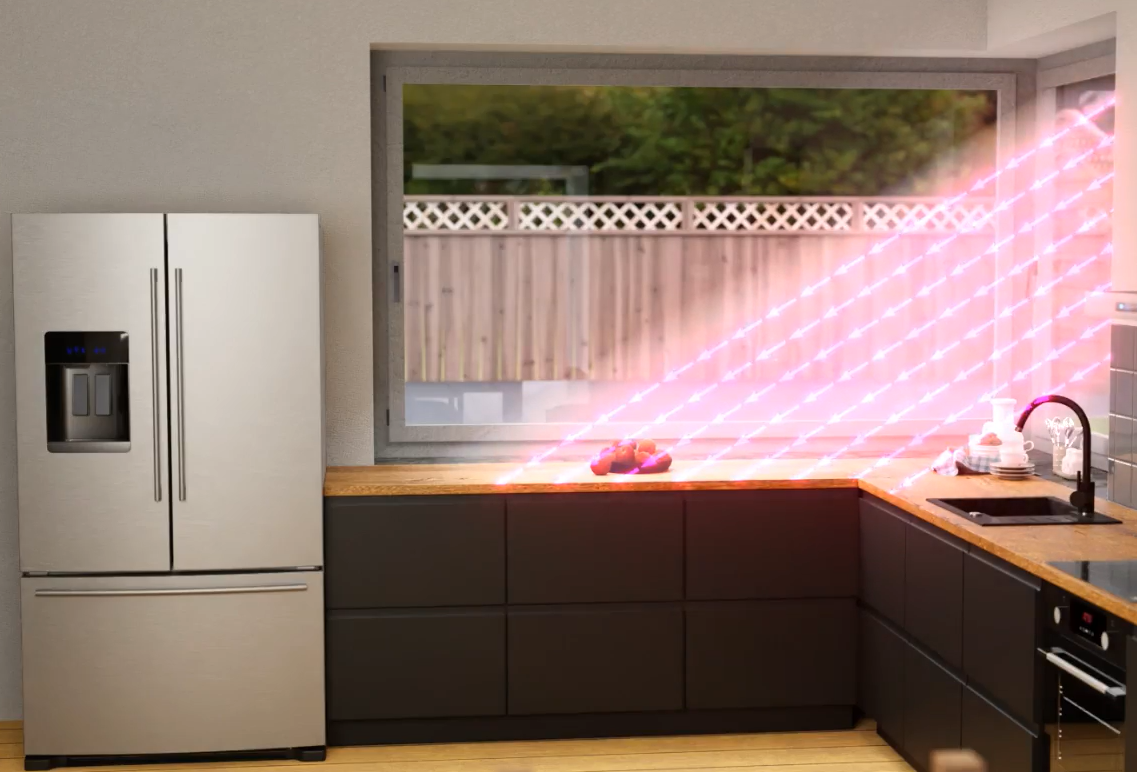Get Tech Tips
Subscribe to free tech tips.
Air Barrier vs. Vapor Barrier vs. Insulation

Think of it like this:
It's a cold, wet, windy day.
You can take an umbrella to protect you from the water alone, but that won't deal with the cold (temperature) or the wind (air convection).
You can add in a light windbreaker, which will help keep the wind (convection) off. But if you also wear a thick sweater, that will help insulate you from the temperature difference (conduction).
In a building, we need to keep outside air out of the home unless it is properly conditioned, we need to keep moisture out, and we need to insulate it from temperature differential outside.
You may ask why you should care as an HVAC/R contractor. That's simple; your customer looks to you as the expert in all things comfort and health-related in their homes and building because you work on the system that keeps them comfortable and moves the air around. Often, we try to fix building problems with equipment, which can be a recipe for disaster.
Here are some basics to help you diagnose and solve building issues.
Air Barrier/Sealing

Air barriers are materials and sealants that don't allow air to enter or leave the building due to simple air pressure differential. We want to use door sweeps and weather stripping, use sealed can lights, seal holes in the tops of stud walls, keep chimney dampers closed when not in use, and seal duct boots where they penetrate the conditioned space.
Some people may say that you don't want a building to be “too tight;” otherwise, you won't have the proper amount of outdoor exchange. This is true, but you also don't want the outdoor air entering from musty attics and crawlspaces and across dirty floors. It is a much better strategy to bring in an appropriate amount of outdoor air from a clean and designed location and temper it through filtration, ERV/HRV, or a dehumidifier as appropriate for the climate. That does require testing and planning, but it is the best way to make a home “airtight.”
This air leakiness of a home is impacted by:
#1 – How leaky the home is
#2 – How great the pressure differences are inside to out
Some pressure differences are natural due to stack effects, wind, etc. Others are caused by duct leakage or imbalanced return/supply into a space within a building. Another potential cause is the ventilation, both overall and localized, such as kitchen hoods and bath fans.
The leakage rate can be tested using a blower door, and a precision manometer can be used to figure out the pressure differential impacting the space and areas within the space.
Vapor Barriers
Water vapor can move through many surfaces through a process called permeation. That is when vapor molecules, in this case, water vapor, can move through a porous material in the direction of high relative humidity to low relative humidity.
In Florida, we have many block homes that have no exterior vapor barrier at all other than paint. Over time, moisture in the vapor state can work its way through block, plywood, or whatever else is used to sheath the walls and roof unless an appropriate vapor barrier is installed.
The issue is that you also need to consider condensation. If water vapor makes contact with a surface below the dew point, it can condense into liquid water, resulting in nasty biological growth. This is why a properly installed vapor barrier is located in a place that allows for drainage on the warm side that will be prone to condensate.
If you fail to have a vapor barrier, there is less likelihood of moisture issues within the wall structure but more likelihood of moisture issues inside due to moisture diffusing into the space through the walls.
Insulation

Insulation generally isn't an air barrier or a vapor barrier, and air and vapor can move through it freely and easily. There are some exceptions, such as closed-cell foam, which is all three, and open-cell foam, which is an air barrier and insulation (but not a vapor barrier).
Insulation is there to prevent heat from traveling through surfaces from hot to cold. We use R-value to rate insulation, with higher R-values indicating greater resistance to the movement of heat. That is an important part of keeping heat in or out of a space in walls, attics, crawl spaces, etc., but it isn't a replacement for thinking about air and vapor barriers.
A few more factors …
Radiant heat is the transfer of energy through “radiation,” which does not require the direct transfer of heat from one molecule to another. Radiant heat can jump distances through the air—or even through a near-vacuum (like the sun)—and we see it in the way a room can heat up through the sun shining through a window, or on an unshaded side of the home when the sun beats down on it.

We see this often in offices where a worker likes to sit in front of an unshaded window (radiant) while sitting in front of a warm computer screen (radiant) and then still feel warm even though the room is 72 degrees.
Liquid Water intrusion can happen into a home from roof leaks, leaking appliances and plumbing, improper flashing, capillary action from the ground up through the walls, etc. Those are all building issues that can impact health and comfort inside the home. If left unresolved, they can cause major issues.
Interior Moisture Loads occur every time we cook and boil water, take showers and baths, do dishes, and even when we exhale. The more people are in a space doing these things, the more moisture there will be. I have nine kids; we cook three meals a day at home and do the laundry all day long. My house is quite tight (3.5 ACH), but it still has a MASSIVE internal moisture load that could lead to issues if it doesn't have lots of dehumidification.
Speaking of that, you can watch a video in which I installed a Clean Comfort dehumidifier in my home.
So, remember:
High Temp Goes to Low Temp
High Humidity Goes to Low Humidity
High Pressure Goes to Low Pressure
—Bryan
P.S. — At the 3rd Annual HVACR Training Symposium in 2022, Bill Spohn and Joe Medosch gave a presentation that covers these topics in detail. Their presentation takes an in-depth look at building science as it relates to HVAC, and you can watch it HERE.











Comments
Thank you for the information. My home is currently uninhabitable due to severe damage in all regards due to Hurricanes Ian and Nicole in Daytona Beach. FEMA finally paid for a new roof but is dragging their feet with so many of us in helping with flooding and now black mold. I have paid for mold remediation out of pocket, am paying to live in a hotel with my disabled sister and now have to pay to have flex duct put back and possibly vapor barrier for our 1848 sq. Foot mobile home. Is the barrier necessary and what is your estimate of cost. What should I look for in credentials for the company as I was scammed once by mold company. Any advice you could offer would be a blessing.
Thank you and Merry Christmas.
redhead44.shannon@gmail.com
Thank you for the information. My home is currently uninhabitable due to severe damage in all regards due to Hurricanes Ian and Nicole in Daytona Beach. FEMA finally paid for a new roof but is dragging their feet with so many of us in helping with flooding and now black mold. I have paid for mold remediation out of pocket, am paying to live in a hotel with my disabled sister and now have to pay to have flex duct put back and possibly vapor barrier for our 1848 sq. Foot mobile home. Is the barrier necessary and what is your estimate of cost. What should I look for in credentials for the company as I was scammed once by mold company. Any advice you could offer would be a blessing.
Thank you and Merry Christmas.
redhead44.shannon@gmail.com
To leave a comment, you need to log in.
Log In